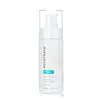What's inside
What's inside
 Key Ingredients
Key Ingredients

 Benefits
Benefits

 Concerns
Concerns

 Ingredients Side-by-side
Ingredients Side-by-side

Water
Skin ConditioningButylene Glycol
HumectantGluconolactone
Skin ConditioningIsocetyl Stearate
EmollientHydrogenated Polydecene
EmollientArginine
MaskingGlyceryl Stearate
EmollientCetearyl Alcohol
EmollientPEG-100 Stearate
Lactobionic Acid
BufferingDimethicone
EmollientMagnesium Aluminum Silicate
AbsorbentAesculus Hippocastanum Seed Extract
Skin ConditioningAscophyllum Nodosum Extract
Skin ConditioningTocopheryl Acetate
AntioxidantPalmitoyl Tripeptide-8
Skin ConditioningAsparagopsis Armata Extract
Skin ProtectingCamellia Sinensis Leaf Extract
AntimicrobialEpilobium Angustifolium Flower/Leaf/Stem Extract
Skin ConditioningAmmonium Glycyrrhizate
MaskingCaffeine
Skin ConditioningBisabolol
MaskingZinc Gluconate
Skin ConditioningSorbitol
HumectantMannitol
HumectantAmmonium Hydroxide
BufferingPropylene Glycol
HumectantDextran
Disodium EDTA
Xanthan Gum
EmulsifyingCaprylyl Glycol
EmollientIsopropyl Titanium Triisostearate
EmollientPhenoxyethanol
PreservativeChlorphenesin
AntimicrobialCI 77288
Cosmetic ColorantWater, Butylene Glycol, Gluconolactone, Isocetyl Stearate, Hydrogenated Polydecene, Arginine, Glyceryl Stearate, Cetearyl Alcohol, PEG-100 Stearate, Lactobionic Acid, Dimethicone, Magnesium Aluminum Silicate, Aesculus Hippocastanum Seed Extract, Ascophyllum Nodosum Extract, Tocopheryl Acetate, Palmitoyl Tripeptide-8, Asparagopsis Armata Extract, Camellia Sinensis Leaf Extract, Epilobium Angustifolium Flower/Leaf/Stem Extract, Ammonium Glycyrrhizate, Caffeine, Bisabolol, Zinc Gluconate, Sorbitol, Mannitol, Ammonium Hydroxide, Propylene Glycol, Dextran, Disodium EDTA, Xanthan Gum, Caprylyl Glycol, Isopropyl Titanium Triisostearate, Phenoxyethanol, Chlorphenesin, CI 77288
Ingredients Explained
These ingredients are found in both products.
Ingredients higher up in an ingredient list are typically present in a larger amount.
Arginine is an amino acid that is important for human development. Your body uses is it to produce hair keratin and skin collagen.
As a cosmetic ingredient, Arginine has antioxidant properties and can also help repair damaged skin. This ingredient is derived either synthetically or from animals.
Arginine isn't fungal acne safe when used in the presence of other lipids (fats, fatty acids, oils, esters, etc). Oils and fats occur naturally within the skin, so take caution when using Arginine if you're prone to fungal acne.
Learn more about ArginineButylene Glycol (or BG) is used within cosmetic products for a few different reasons:
Overall, Butylene Glycol is a safe and well-rounded ingredient that works well with other ingredients.
Though this ingredient works well with most skin types, some people with sensitive skin may experience a reaction such as allergic rashes, closed comedones, or itchiness.
Learn more about Butylene GlycolChlorphenesin is a synthetic preservative. It helps protect a product against bacteria in order to extend shelf life. In most cases, Chlorphenesin is paired with other preservatives such as phenoxyethanol and caprylyl glycol.
Chlorphenesin is a biocide. This means it is able to help fight the microorganisms on our skin. It is also able to fight odor-releasing bacteria.
Chlorphenesin is soluble in both water and glycerin.
Studies show Chlorphenesin is easily absorbed by our skin. You should speak with a skincare professional if you have concerns about using Chlorphenesin.
Learn more about ChlorphenesinDisodium EDTA plays a role in making products more stable by aiding other preservatives.
It is a chelating agent, meaning it neutralizes metal ions that may be found in a product.
Disodium EDTA is a salt of edetic acid and is found to be safe in cosmetic ingredients.
Learn more about Disodium EDTALactobionic Acid is a PHA. PHAs are the gentle cousins to AHAS.
Like AHAs, they exfoliate the top layer of skin. Lactobionic acid also exhibits significant antioxidant activity.
PHAs are more gentle than AHAs due to their larger structure. This means they do not penetrate as deeply as AHAs and take a longer time to dissolve dead cells. Studies show PHAs do not cause as much irritation.
By removing dead skin cells, PHAs leave the skin brighter and with even-texture.
Learn more about Lactobionic AcidTocopheryl Acetate is AKA Vitamin E. It is an antioxidant and protects your skin from free radicals. Free radicals damage the skin by breaking down collagen.
One study found using Tocopheryl Acetate with Vitamin C decreased the number of sunburned cells.
Tocopheryl Acetate is commonly found in both skincare and dietary supplements.
Learn more about Tocopheryl AcetateWater. It's the most common cosmetic ingredient of all. You'll usually see it at the top of ingredient lists, meaning that it makes up the largest part of the product.
So why is it so popular? Water most often acts as a solvent - this means that it helps dissolve other ingredients into the formulation.
You'll also recognize water as that liquid we all need to stay alive. If you see this, drink a glass of water. Stay hydrated!
Learn more about Water